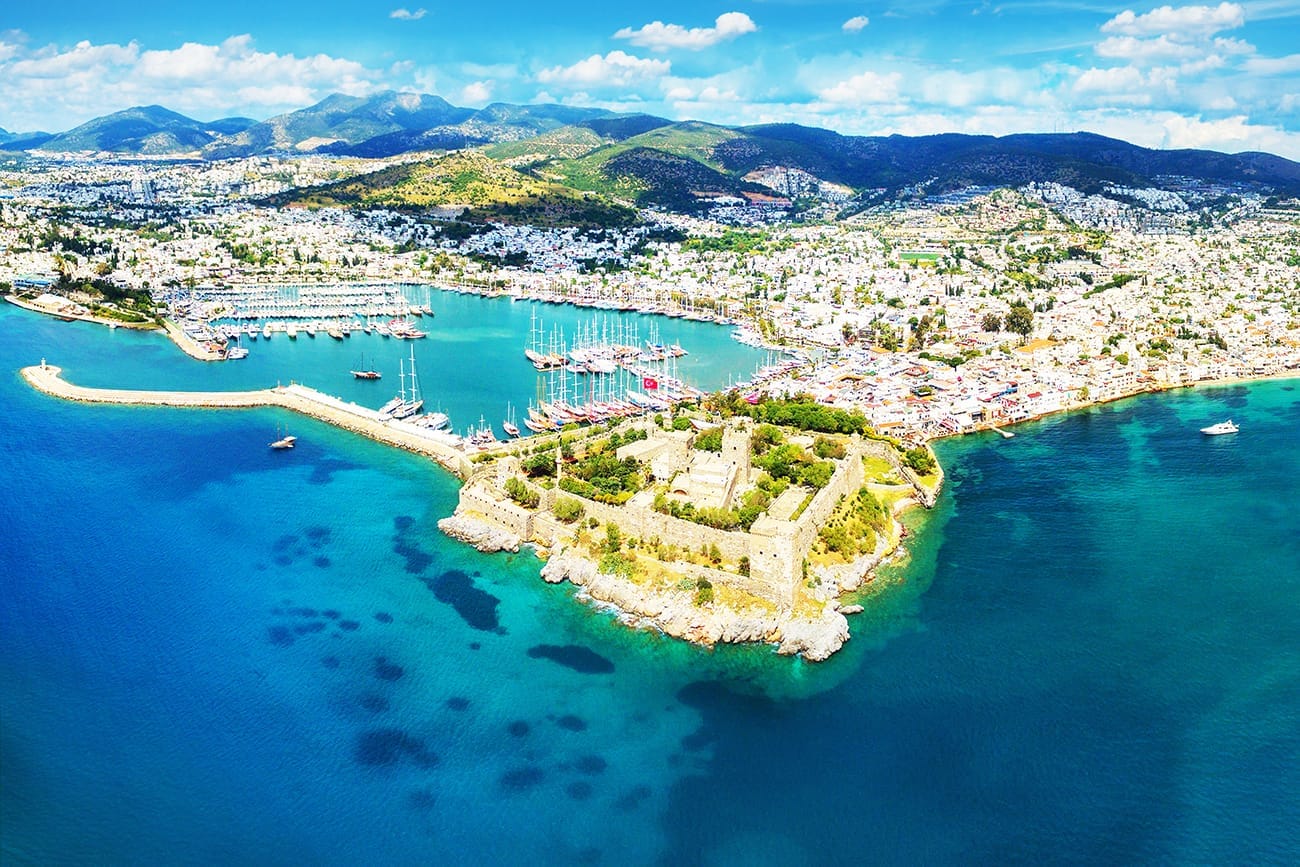The Bodrum Museum of Underwater Archaeology
ocated within Bodrum Castle, the Bodrum Museum of Underwater Archaeology was founded in 1958 thanks to the statues and amphoras that sponge hunters found as a result of coincidence. Although the museum is frequented by many holidaymakers throughout the season, we think it does not receive the attention it deserves. If this museum were in America, England, France or any other European country, there would undoubtedly be an influx of millions of local and foreign visitors every year.
We fear that most holidaymakers who come to Bodrum on holiday aren’t even aware of the existence of such a valuable museum or know its existence, but they are not aware of its value. When you see the queues in front of museums in European countries, one thinks that we don’t advertise enough.
You may agree with us after reading our article on the Bodrum Museum of Underwater Archaeology …
You can see the world’s richest Eastern Mediterranean amphora collection displayed in 14 exhibition halls in the Bodrum Museum of Underwater Archaeology. The collection consists of amphoras dating back to 15 B.C. and later. You can also see the ship wreck belonging to ‘bronze age’ which sank in 1025, displayed in Serce Limani Glass Wreck Hall.
Uluburun Wreck, which is one of the most important exhibits of the museum, is displayed on the second and third sections of the hall. As well as an exact replica of the Uluburun, which is known as the oldest wreck in the world, priceless artefacts such as the golden seal of Nefertiti, the Egyptian Queen and pharaoh’s golden wine cup which were recovered from the wreck are also in this exhibition.
The other wrecks displayed in the Bodrum Museum of Underwater Archaeology are; Gelidonya Wreck, Yassiada Wreck, Roman Merchant Ship Wreck, Devil Creek Wreck, Marmaris Serce Limani Wreck and Tektas Cape Wreck.
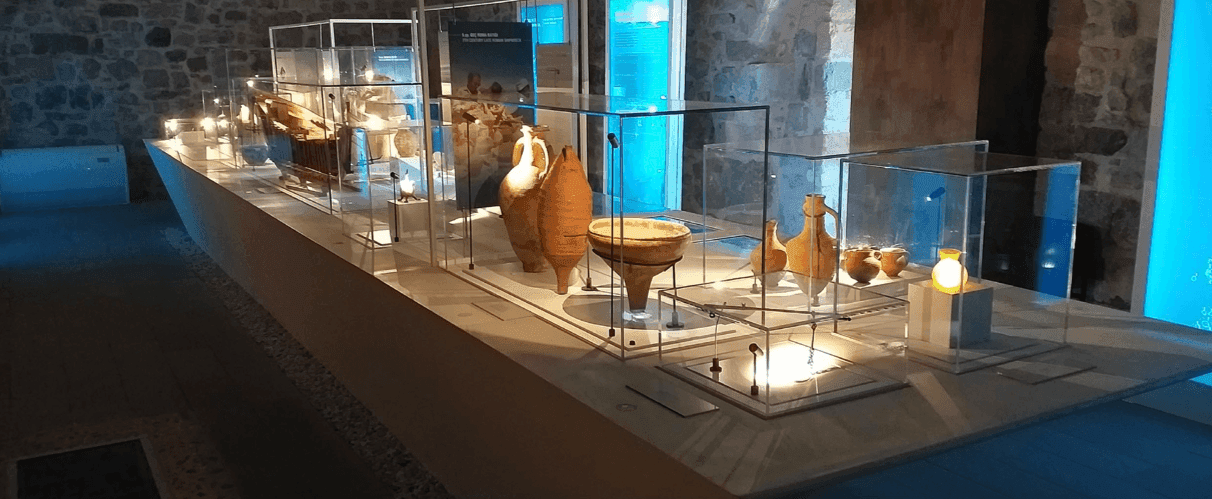
The Bodrum Museum of Underwater Archaeology is visited by nearly 30 thousand people each year.
History of the Bodrum Museum of Underwater Archaeology
In 1958, American journalist Peter Throckmorton hears the story of the Gelidonya Wreck in Bodrum, where he came to investigate the story of sponge divers. Peter Throckmorton, who thought that the Gelidonya Wreck, which was discovered by Bodrum sponge diver Kemal Aras as a result of a coincidence, is an important historical discovery of the ‘Bronze Age’ period and reports this discovery to Prof. Dr. Robin Young, Head of the Department of Archaeology at the University of Pennsylvania, who had previously led the excavations of Gordion, near Polatlı. In return, Young informs George Bass, his most promising doctorate student, studying the ‘Bronze Age’, who is now considered to be the father of underwater archaeology.
George Bass and Peter Throckmorton makes the most important underwater discovery a year later, in 1960, with the help of Kemal Aras, the sponge diver. This historical discovery leads to the founding of the Bodrum Museum of Underwater Archaeology.
George Bass, who was 27 years old at the time, said; “We needed a place to keep the invaluable things we found and we only had 200 dollars.” They go on and paint the dining hall of the knights at Bodrum Castle and build windows and doors. They store the findings from Gelidonya Wreck here and receive a 1000 dollar grant from the Turkish officials a year later to build the first glass display cases.
George Bass establishes the Bodrum Museum of Underwater Archaeology with Turkey’s first underwater archaeologist, Oguz Alpozen whom he met during Yassiada excavation in 1962. Oguz Alpozen directs the museum until 2005.

According to studies, a Middle Eastern merchant ship sinks in 1200 B.C. after hitting the rocks while going through the islands opposite Gelidonya Lighthouse.
Gelidonya Wreck
According to studies, a 20 meter Middle Eastern merchant ship sinks after hitting the rocks while going through the islands opposite Gelidonya Lighthouse. For about 3200 years the wreck lies without anyone knowing its existence, until Kemal Aras dives here for sponges in 1953. Kemal Aras was unaware of the fact that he has made one of the world’s most significant discoveries when he picked a few small pieces from the wreck, not until showing these pieces to an American journalist, Peter Throckmorton!
Peter Throckmorton, who thought that this was a significant wreck dating back to the Bronze Age, began underwater excavations off the Gelidonya Lighthouse in June 1960 with George Bass, one of Prof. Robin Young’s students, and excavations end in September 1960. They recover brass and tin bullions and led pieces, bead jars, spice jars and crystals from the ship which was carrying very significant goods of the period. The findings from this first scientific underwater excavation leads to the founding of the the Bodrum Museum of Underwater Archaeology.
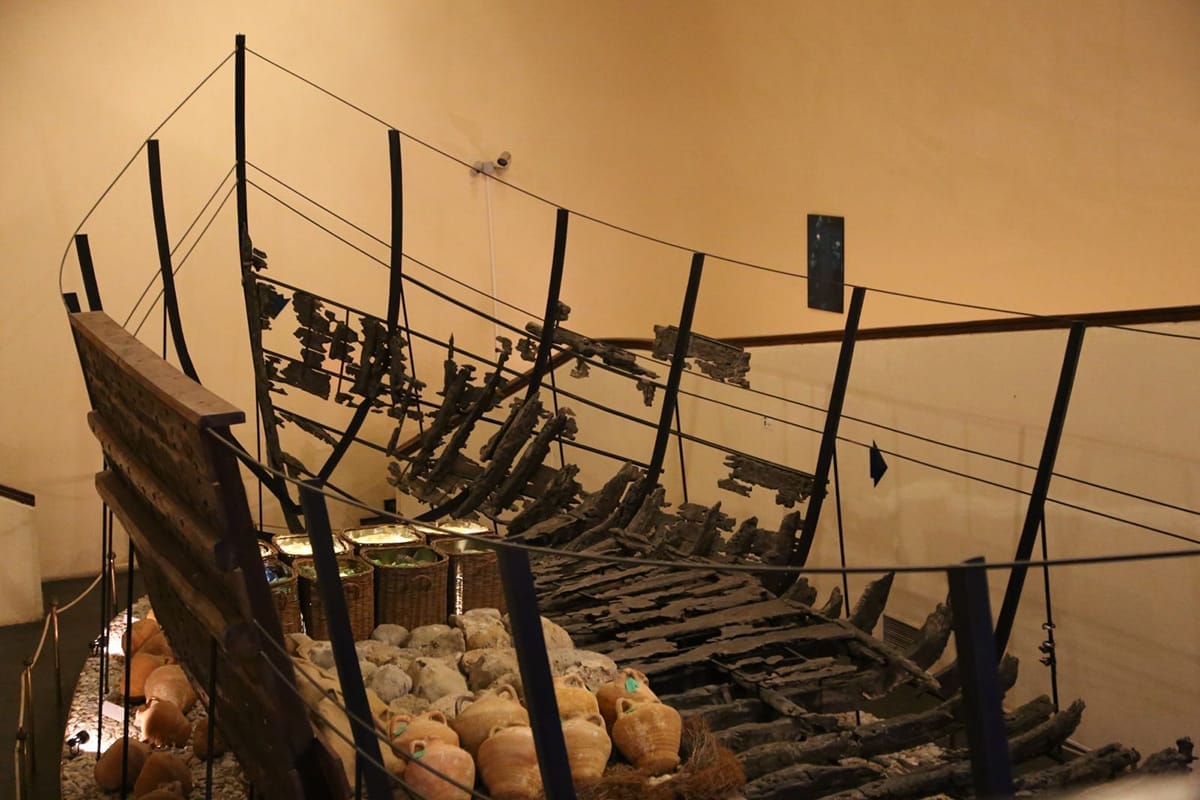
Marmaris Serce Limanı Wreck was discovered by coincidence in 1970 by Mehmet Askin, a sponge diver.
Marmaris Serce Limani Wreck
After the discovery of the Bronze Age wreck, discoveries follow one another and in 1970 another sponge diver, Mehmet Askin discovers the Marmaris Serce Limanı Wreck by coincidence. World’s biggest Islamic glass artefact collection of medieval age is recovered from this cargo ship. Thousands of glass goods shattered into a million pieces are put together over a 20 year period with the effort of a team which also includes young girls from Bodrum and takes its place to be exhibited in the Bodrum Museum of Underwater Archaeology
The wreck, which was excavated by George Bass and his team between 1977 and 1979 was quite intact. It is thought that the ship carried the cargo of a merchant who was cruising freely between Islamic and Byzantine states. It is also thought that scrap glass was loaded onto ship to be re-processed while the new glass goods were sold in the harbours which the ship visited.
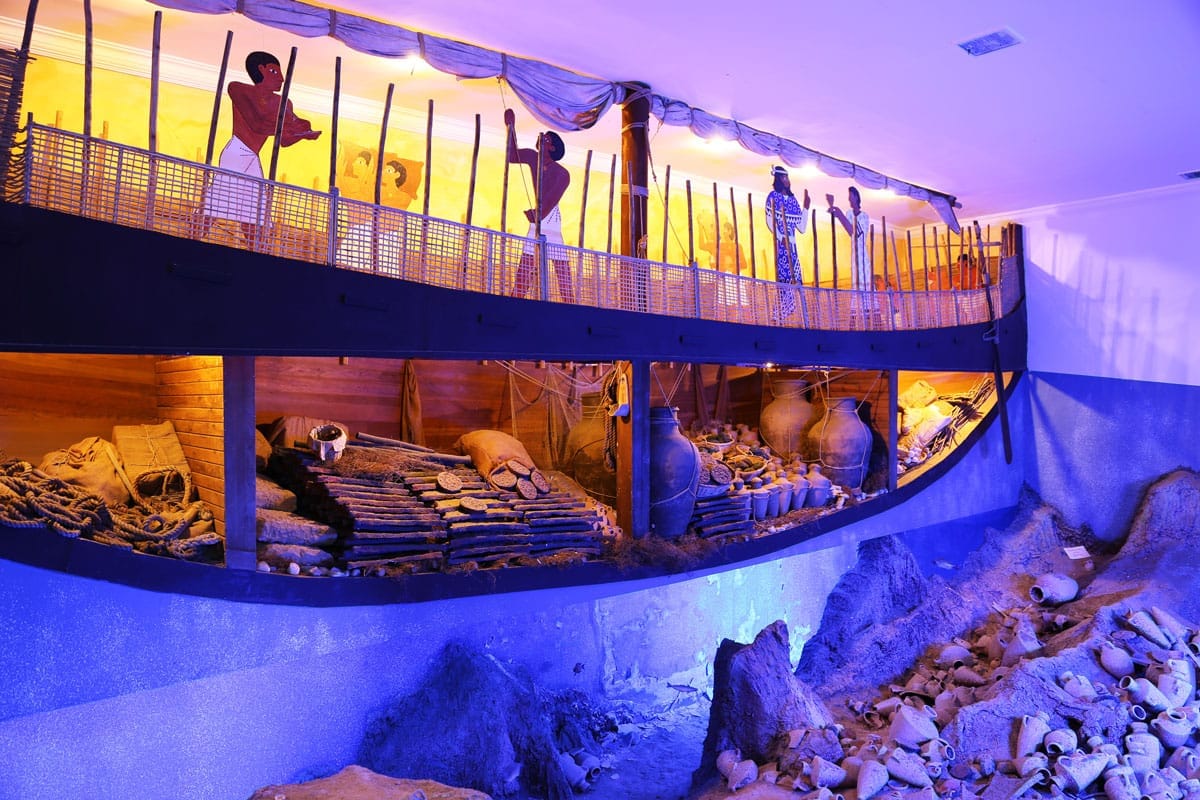
The drawings in an Egyptian tomb painting, describing the arrival of a Syrian ship to the port in 1400 BC, and the findings excavated from Uluburun Wreck were, astonishingly, almost identical.
Uluburun Wreck
In 1982 another sponge diver, Mehmet Cakir, discovers the Uluburun Wreck about 8 kilometres off Kas, Antalya. In those days the sponge divers were trained by the Institute of Nautical Archaeology (INA) on how to identify old wrecks. Mehmet Çakır shows the drawings of his findings to Oguz Alpozen, director of the Bodrum Underwater Archaeology Museum, and the investigation team led by Oguz Alpozen dive to the Uluburun shipwreck for location detection in 1982.
The cargo of this ship, which dates back to 14 B.C. shocks the science world. Uluburun Wreck, which is the largest cargo ship known in the antiquity, has a history of 3,400 years.
Another coincidence which attracts the attention of the archaeologists is the similarity of the findings from Uluburun Wreck to a story told in an Egyptian tomb painting. The drawings in this Egyptian tomb painting, describing the arrival of a Syrian ship to the port in 1400 BC, and the findings excavated from Uluburun Wreck were, astonishingly, almost identical.
Amongst the cargo of the wreck, which weighed almost 20 tonnes, were ivory, silver, amber, gold, ceramics; tin, bronze, copper and glass bullions, African ebony, Baltic amber, gold and silver jewellery collections as well as Queen Nefertiti’s gold seal and pharaoh’s golden wine cup; invaluable artefacts, figurines, swords, bows, arrows and arrowheads; and 18 thousand pieces that were found took their place in the Bodrum Underwater Archaeological Museum to be displayed.
The work, which was initiated in 1984 under the supervision of George Bass who was the founder of Institute of Nautical Archaeology and Cemal Pulak, was completed in 1994.
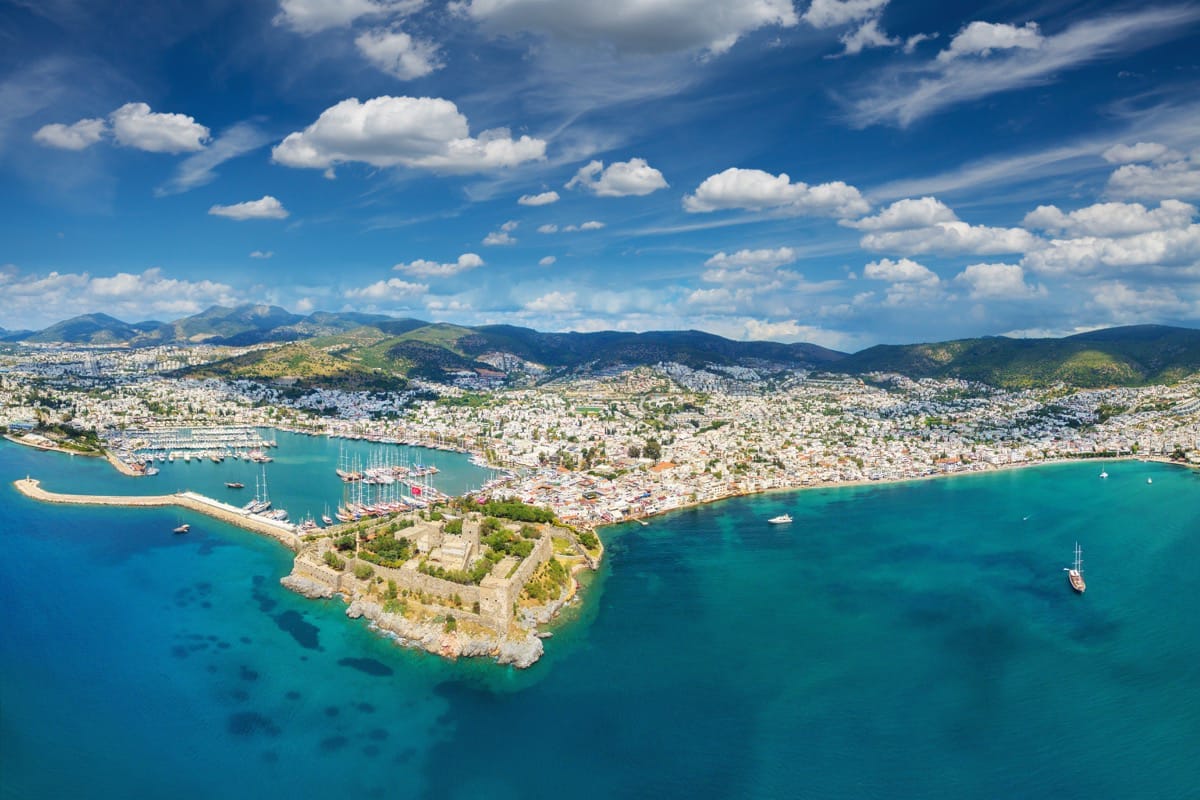
Bodrum Castle hosts the Bodrum Museum of Underwater Archaeology.
Where is the Bodrum Museum of Underwater Archaeology?
The Bodrum Museum of Underwater Archaeology has won the ‘Special Commendation Award’ in The European Museum of the Year Awards in 1995. We hope that all holiday makers understand the significance of the findings displayed in the museum. We suggest you to spare a day of your holiday to visit the Bodrum Museum of Underwater Archaeology, which is one of the most important museums of the world.
The museum is located in the center of Bodrum, in Bodrum Castle which means that you can visit both the Castle and the museum at the same day. Bodrum Castle will appear before you in all its glory when you walk from Bodrum bus station to the seafront. If you want to come from other locations of Bodrum, you can also use the public transport buses. You can find out more about this subject in our Bodrum Transportation Guide. You can see the map, showing the location of the Bodrum Museum of Underwater Archaeology through this link.
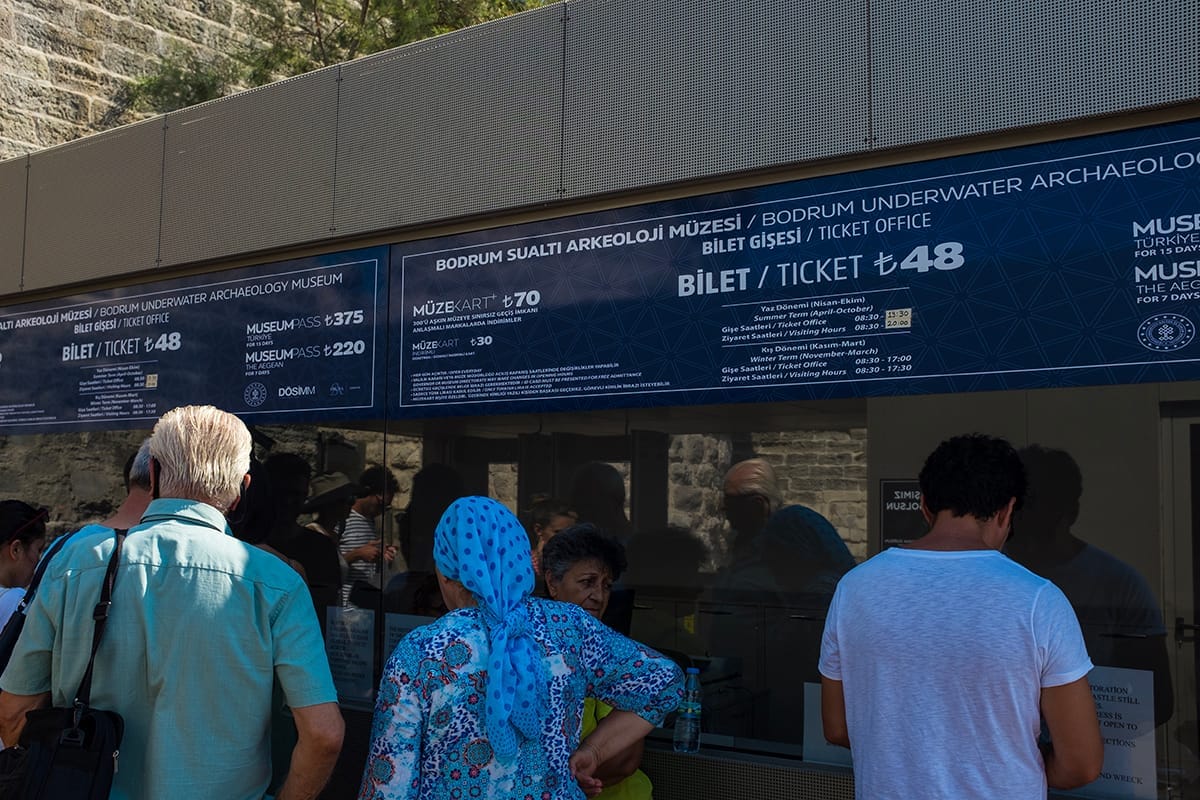
Entry fee for the Bodrum Museum of Underwater Archaeology is 450 TL for 2023.
Entry Fees for the Bodrum Museum of Underwater Archaeology
Entry fee for the Bodrum Museum of Underwater Archaeology is 450 TL. Those who hold a ‘Museum Card’ are granted two free entries per year.
Even if the theme of your holiday is ‘sun and sea’, we suggest you to do your best to spare a day to visit the castle and the museum. We recommend you to visit early in the morning as it can get very hot later in the day.
Summer period visiting hours 08:30 – 18:30
Winter period visiting hours 08:30 – 17:30
Entry fee for 2023: 450TL.
We will be happy to hear your comments and experience on the section below this article.
SOURCES
- Bodrum Sualtı Arkeloji Müzesi ve Genel Bilgiler — bodrum.bel.tr
- Bodrum Sualtı Arkeoloji Müzesi faaliyet saatleri ve giriş ücreti — muze.gov.tr
- Gelidnoya Batığı Tarihi — Emin Çapa youtube kanalı
- Bodrum Sualtı Arkeoloji Müzesi Tarihi — hurriyet.com.tr
- Bodrum Sualtı Arkeoloji Müzesi Tarihi — sarkac.org

